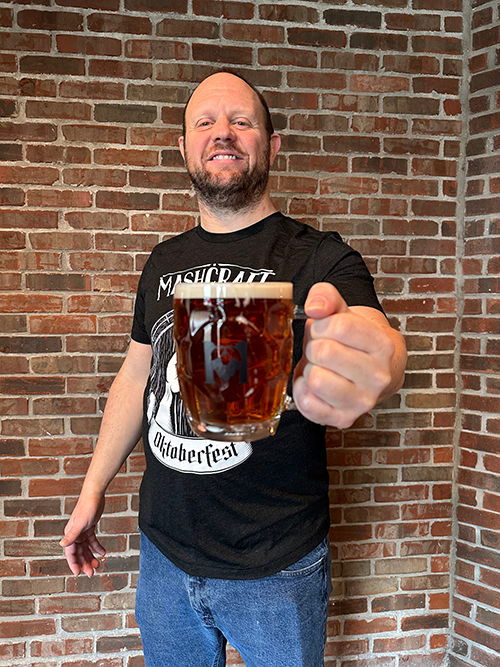From Grain to Glass: The Craft of Brewing Oktoberfest Beer

Fall is the Season for cool outside nights, changing leaves, and weekends full of football. It is also the season highlighted by one of the best seasonal beer releases of the year. Oktoberfest is sought after by fans worldwide because of its soothing hint of malt flavor followed by a balanced, clean, and easy-drinking finish. From the beer gardens in Munich to the craft brewery taprooms in the United States, this flavor profile provides a time-tested formula for suds enjoyment.
Despite the simplicity of Oktoberfest’s flavor profile, the science behind the beer is far from easy. The brew starts with premium German Vienna and Munich malts that are in a class all their own. European 2-row barley is added with moisture in the malthouse to trick the seed into thinking it has been planted. Once the maltster sees the kernel sprout and germination has begun, they introduce heat to stop the process. At this point, you have the enzymes and starch you need in the kernel for the mash process to be effective. The maltster will heat at different temperatures for different time periods to create different results. In the case of Oktoberfest malts, they cook the grain kernel to darken it slightly to a light brown color to create those beautiful bready flavor notes that are synonymous with the style.
Once brewers crush the malted barley in a mill, we mix the grain in the mash tun with hot water at about 150 degrees Fahrenheit to get the enzymes actively converting the grain starch to simple and complex sugar chains. The sugar molecules that are created and their molecular structure determine a large amount of the beer profile that is created. Brewer’s yeast can ferment short, simple sugar chains but cannot digest longer complex chains. This outcome is the reason a light lager is dry and crisp while a porter or stout can be sweet and rich.
After finishing the mash, brewers will circulate the liquid to make it clear and then transfer it to the boil kettle. The boil sterilizes the sweet liquid and allows us to add the hops before we cool it down and send it to the fermenter. The hops in Oktoberfest will usually be restrained to provide a background bitterness and possibly bring a floral element to the flavor profile.
After boiling and cooling, clean fermentation is the key to all great beers, but in Oktoberfest and other German lagers, it is even more critical. The yeast that creates great lager beer loves to have an environment with plenty of its yeast friends around at the right temperature and pressure. If you can meet the yeast’s picky needs, a smooth, refreshing, and clean beer is your reward in the end. Once you are able to execute all of this to a high degree of success, the brewer will let Oktoberfest beer have a long, cold slumber at temperatures below 40 Fahrenheit to bring all of these beautiful elements into balance.
If you are now intrigued and want to see the end of this journey, stop by your local MashCraft location to taste this year’s version of Oktoberfest!
Andrew Castner is one of the owners of MashCraft Brewing with locations in Greenwood, Indianapolis, and Fishers. MashCraft is kid-friendly with a full food menu and wine and cider available. Beers are created by our experienced brewers Dustin Sparks and Fred Williams.
